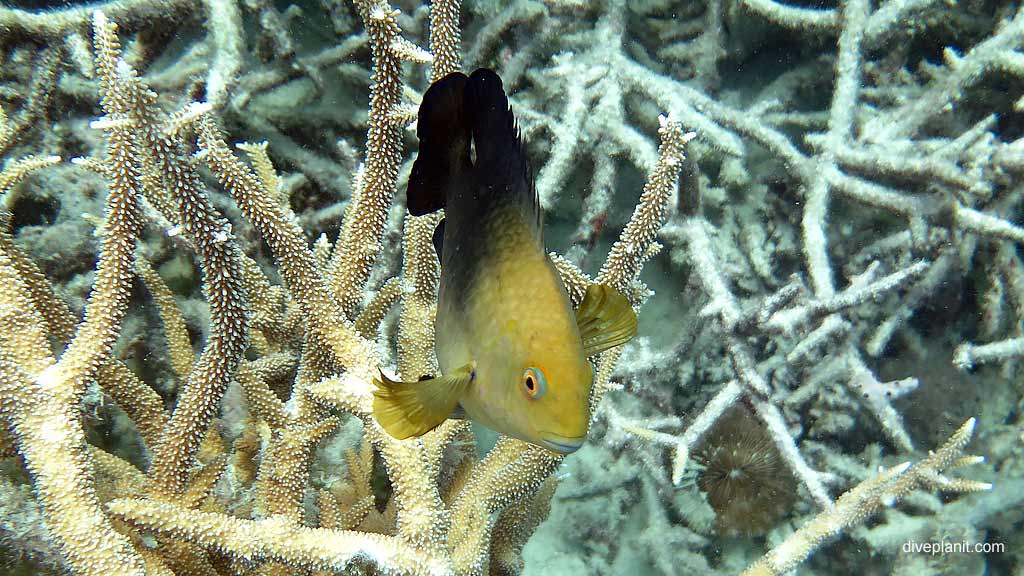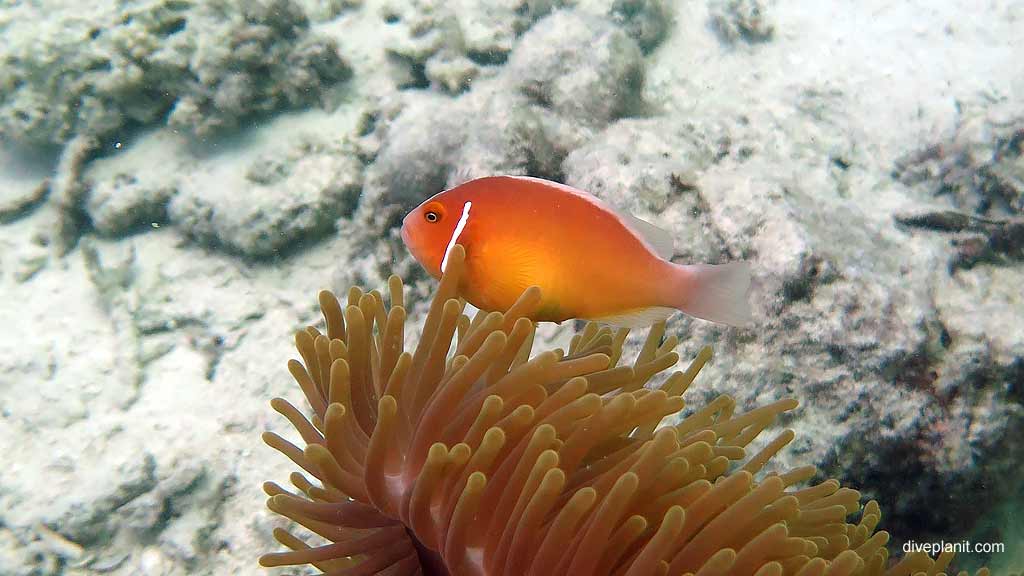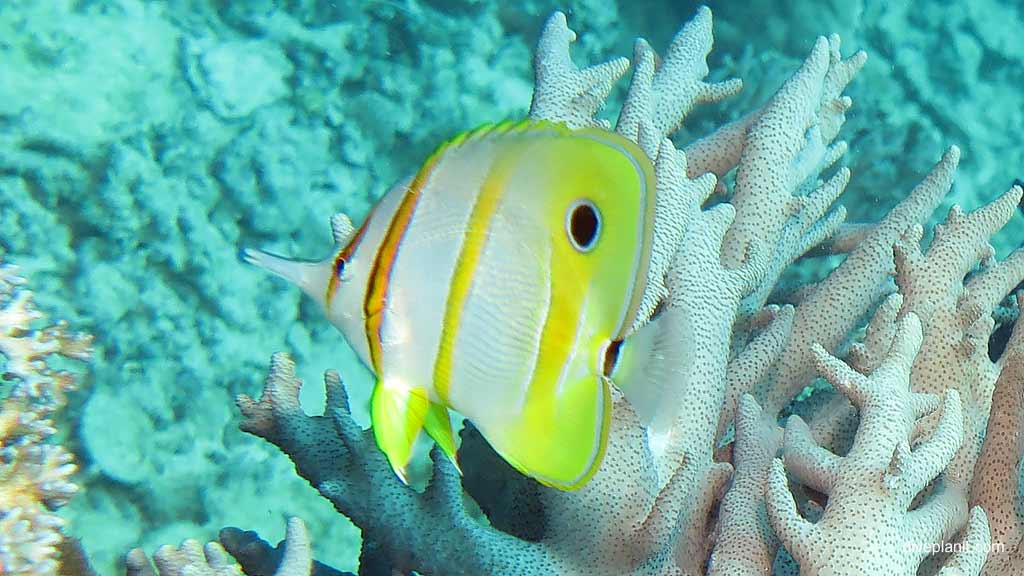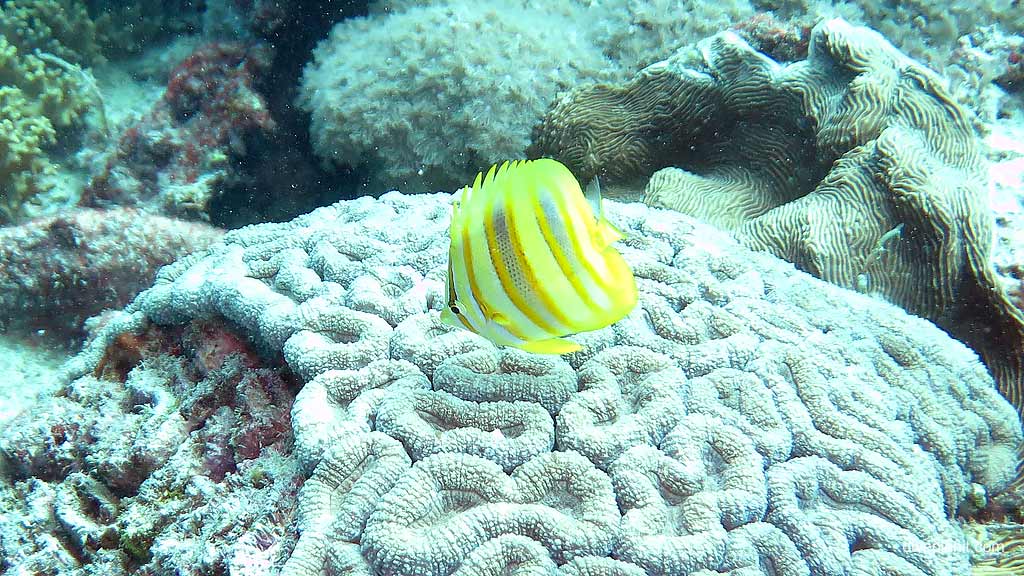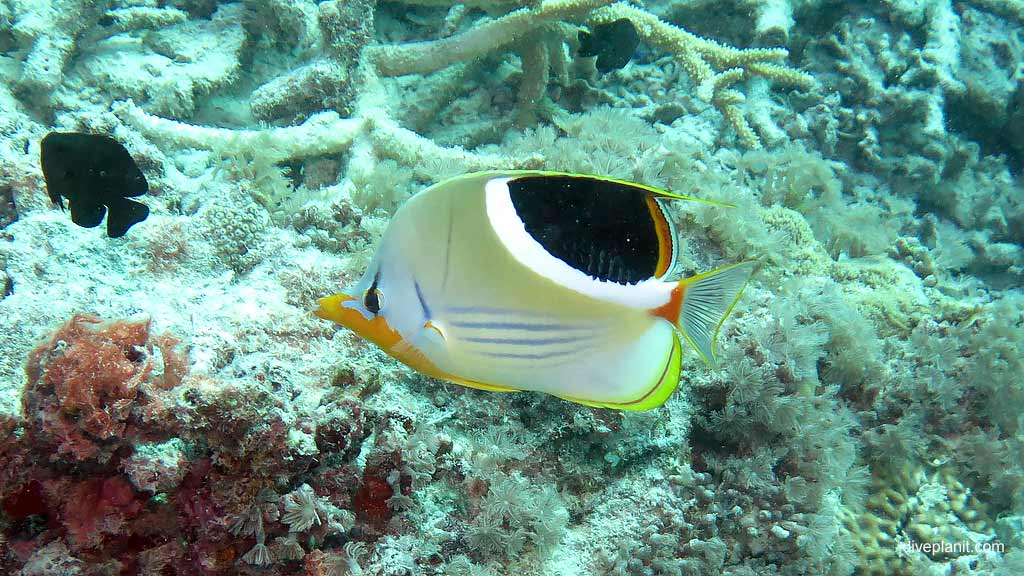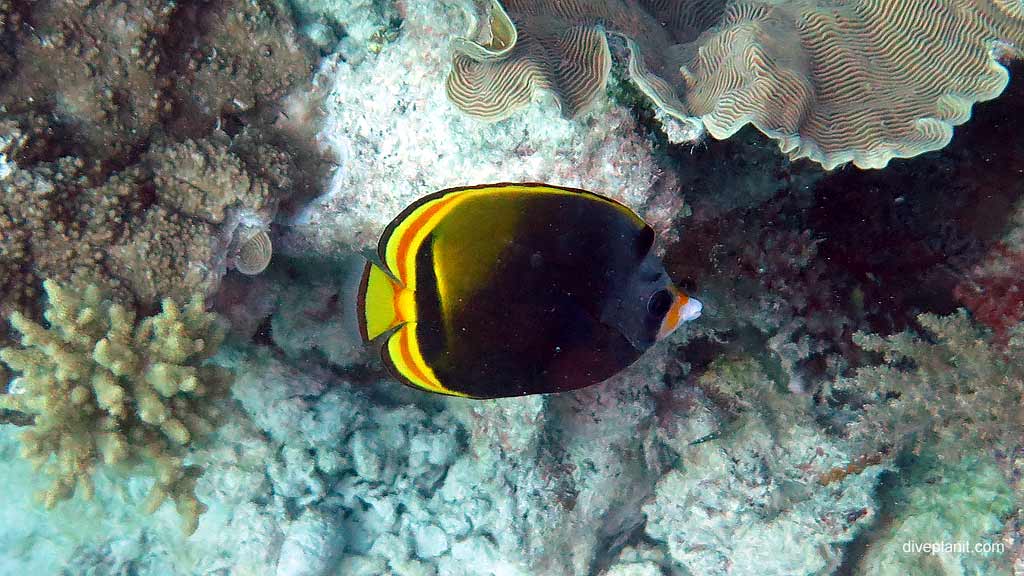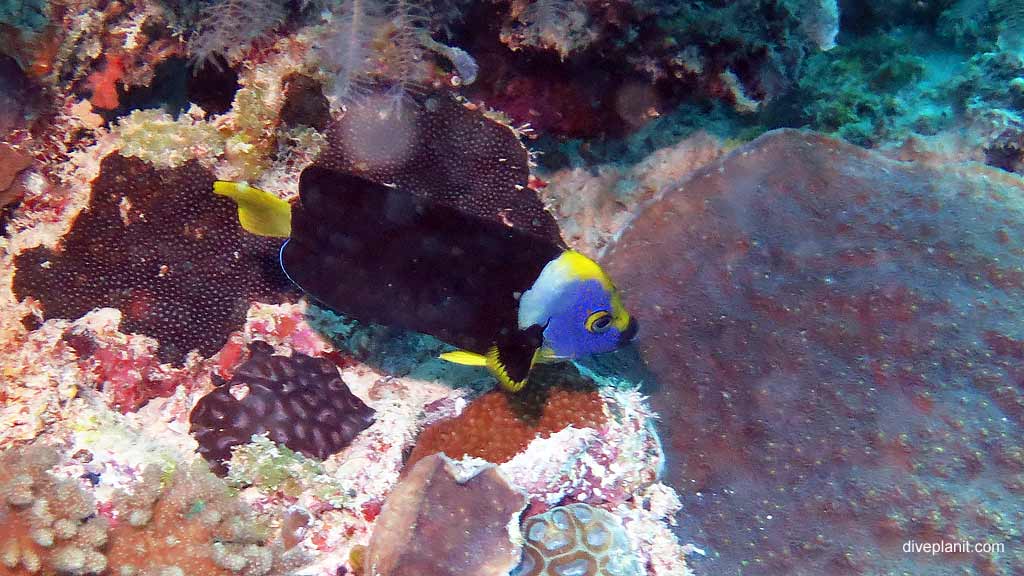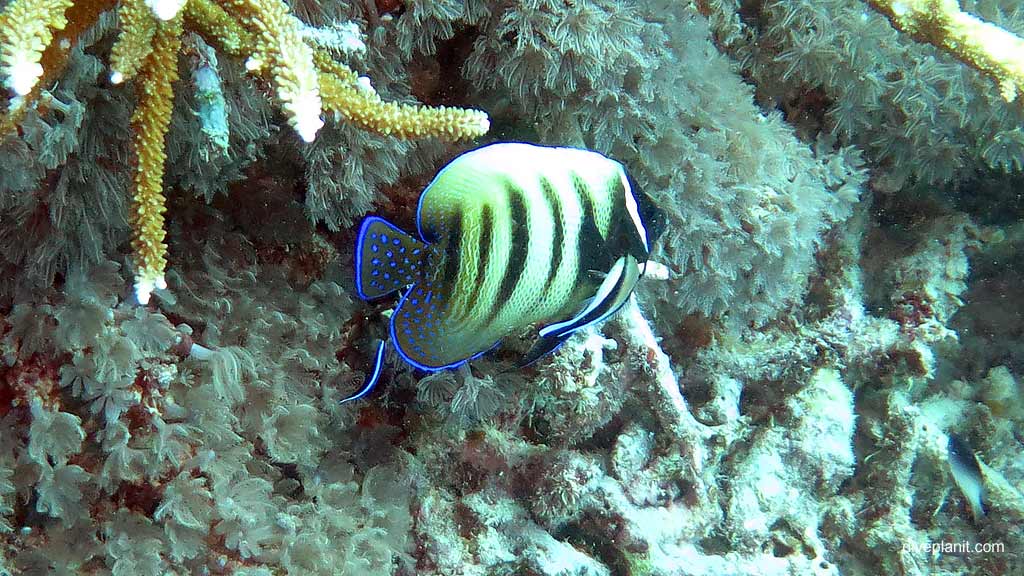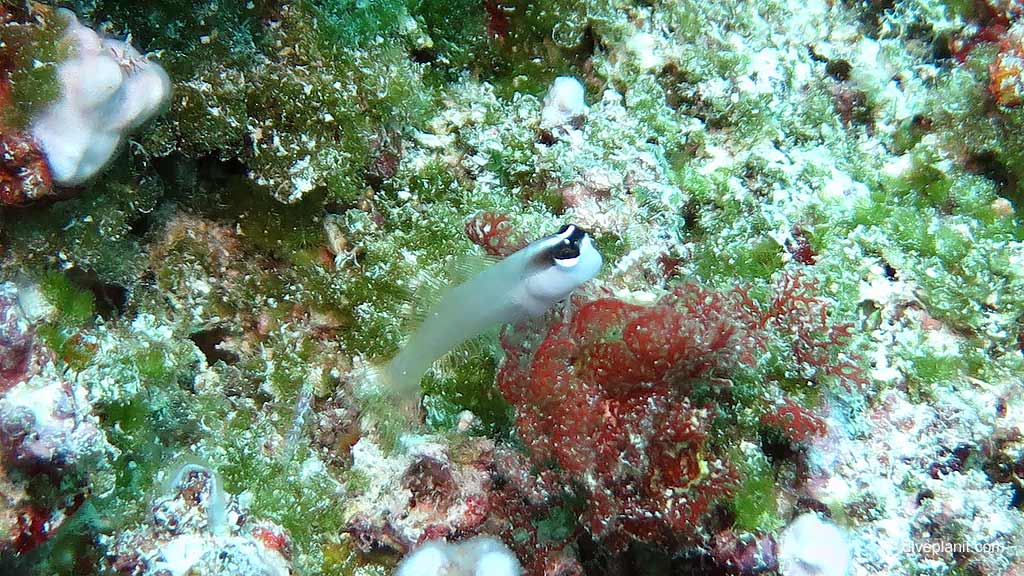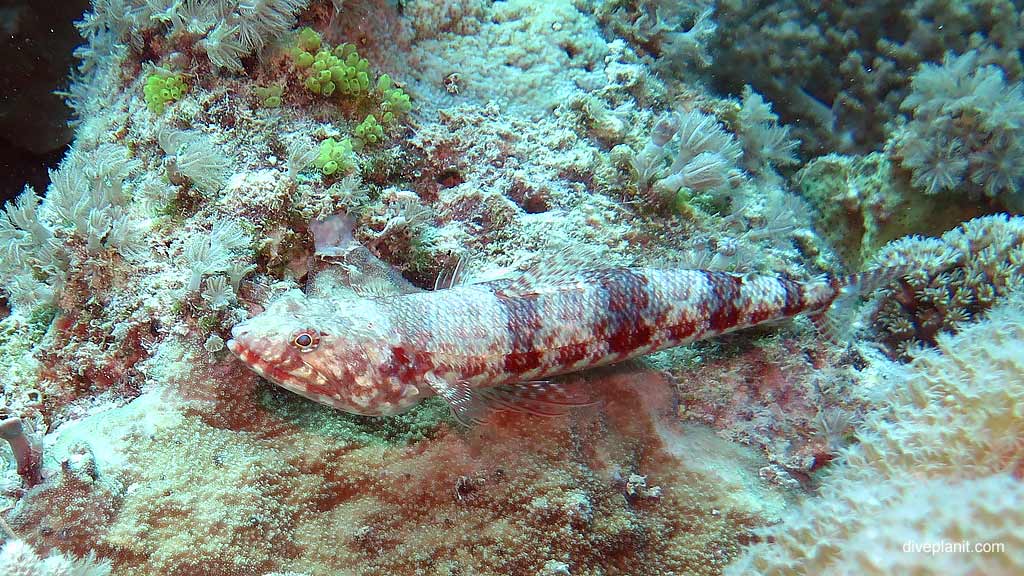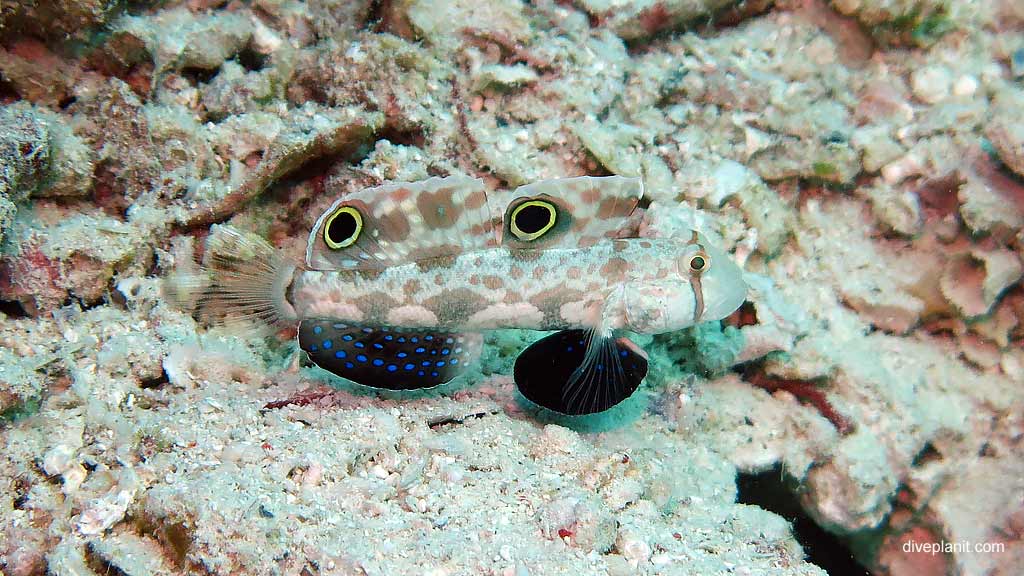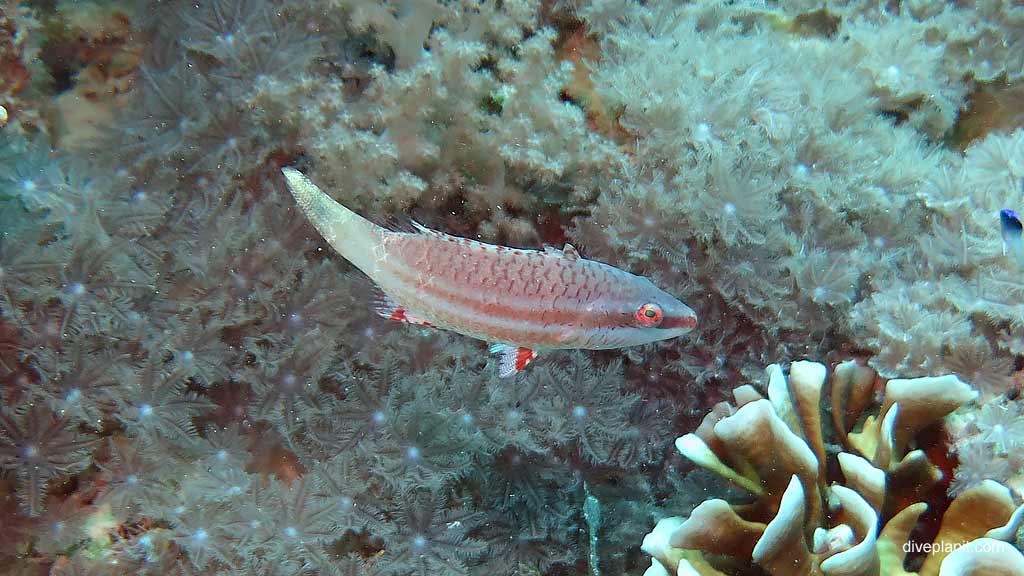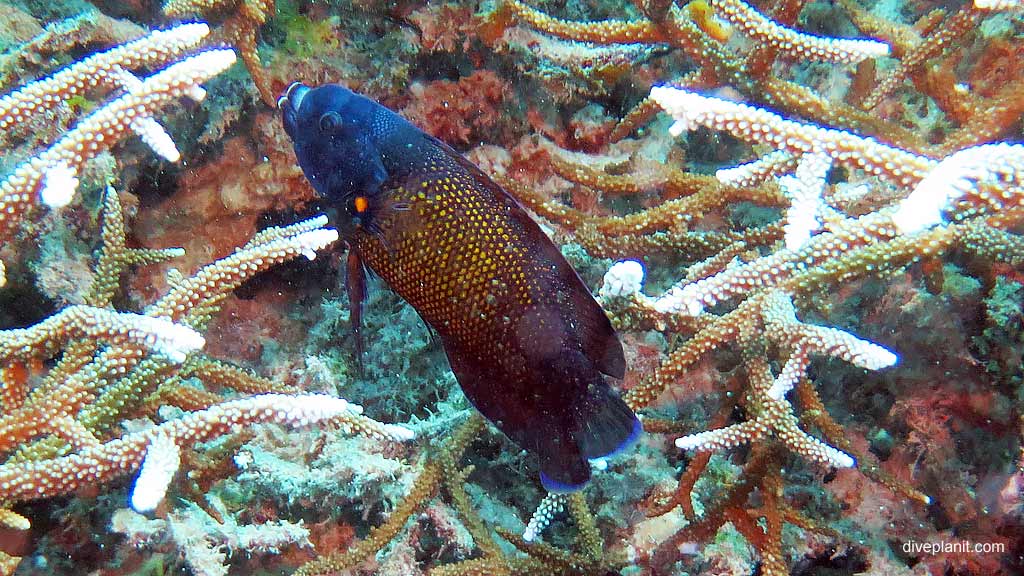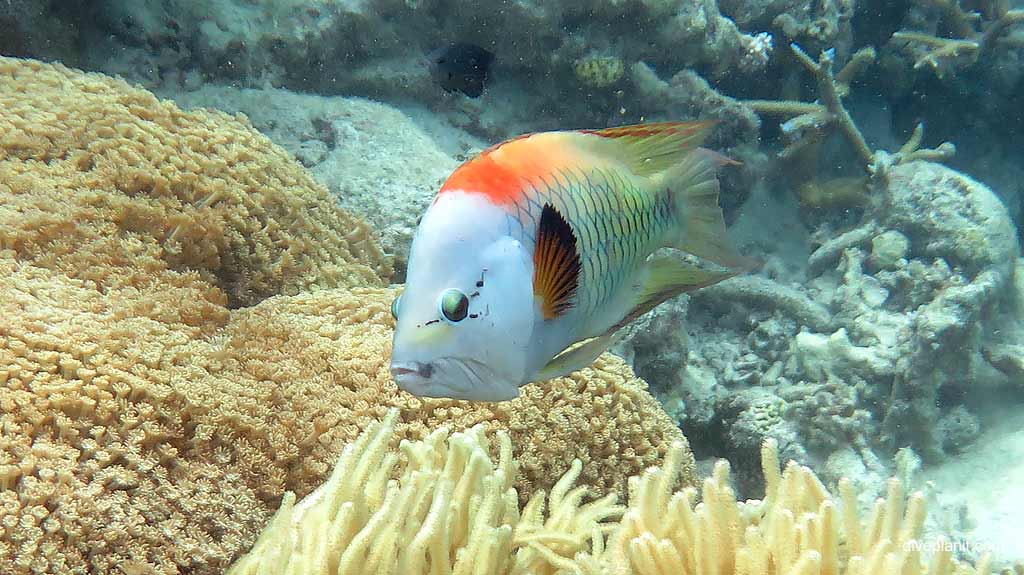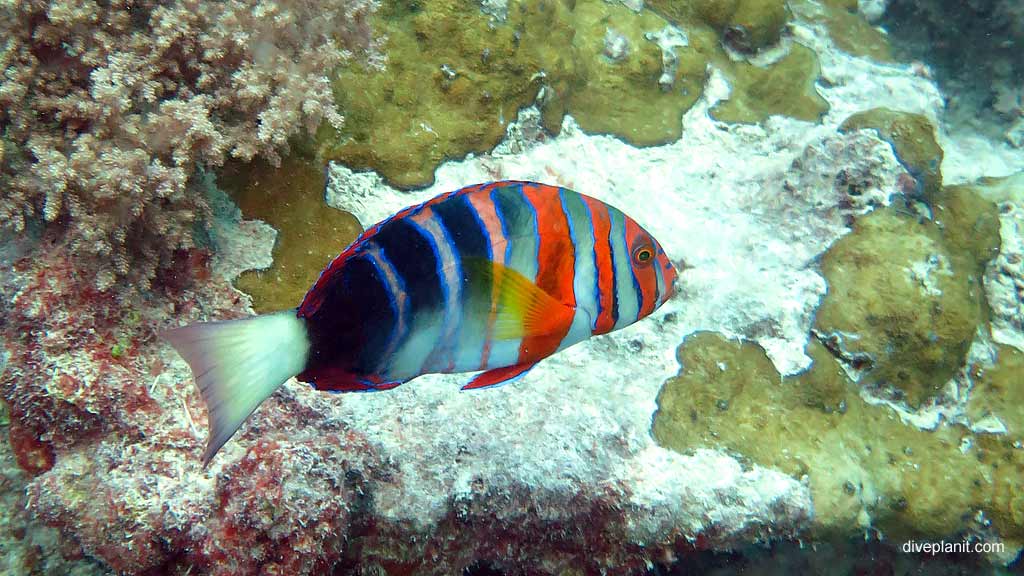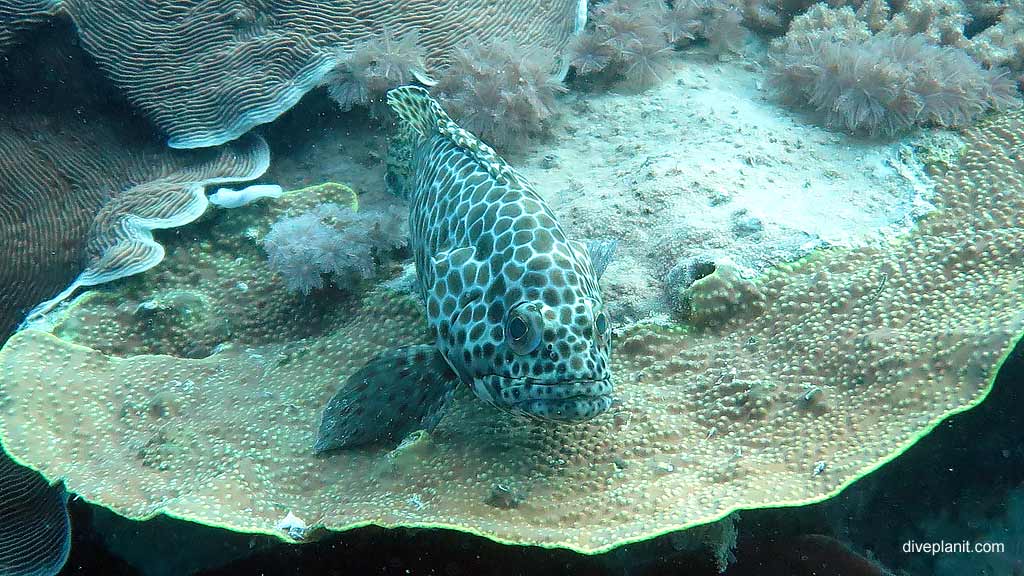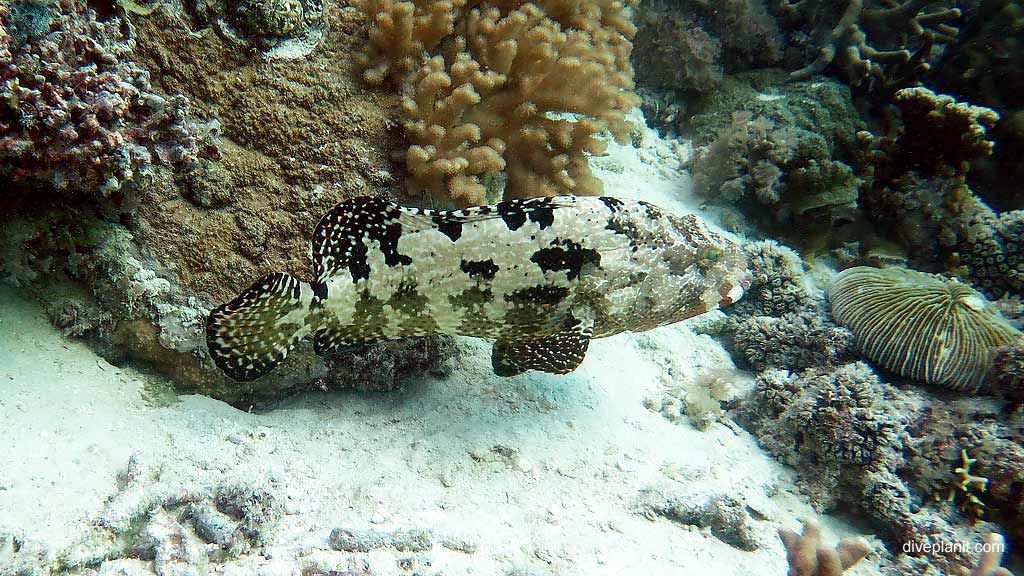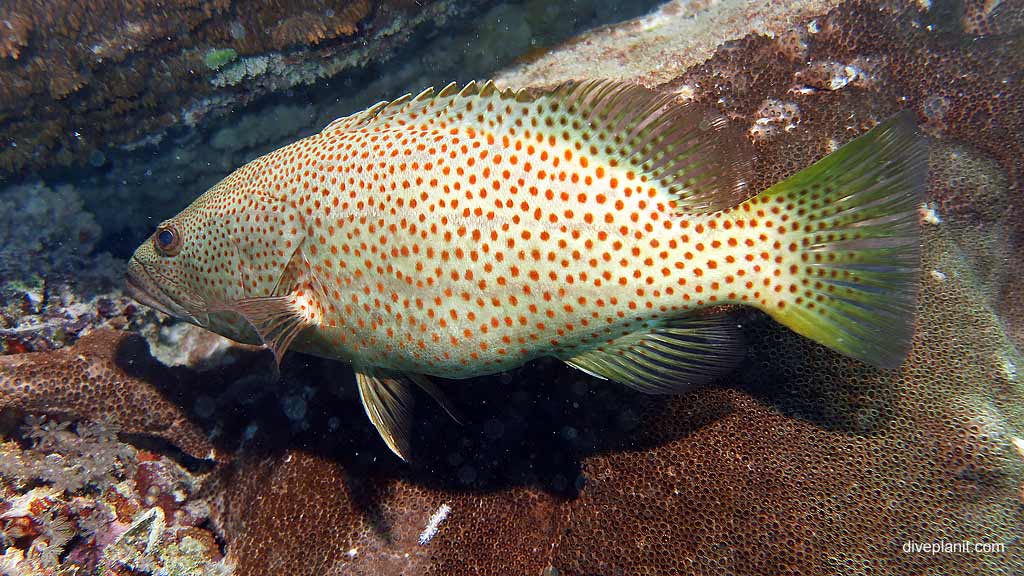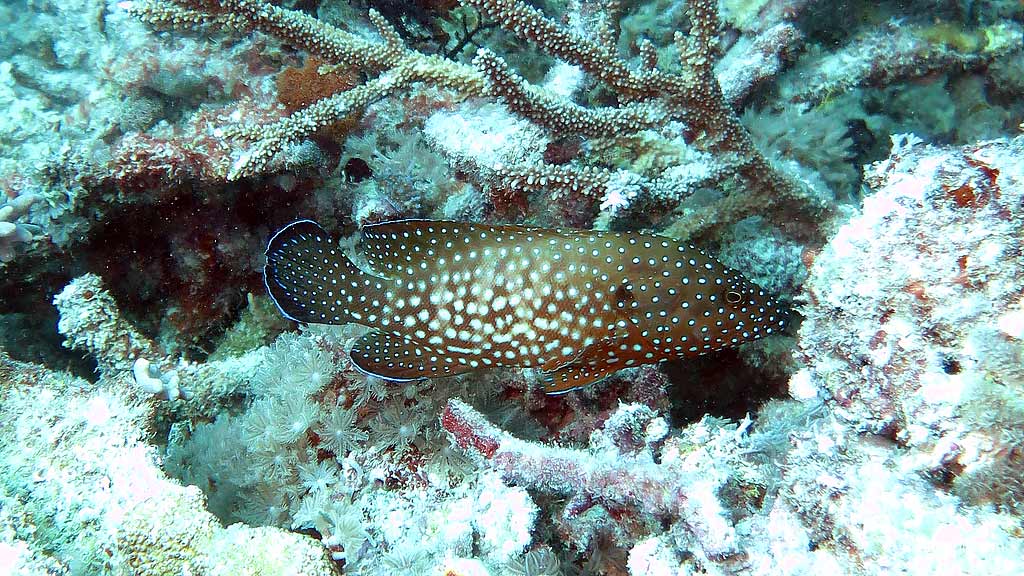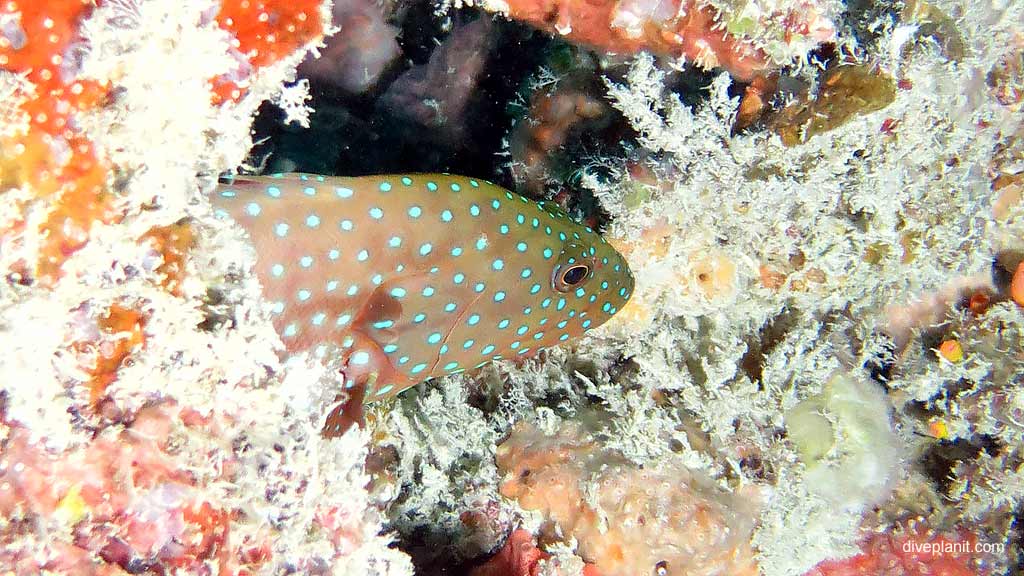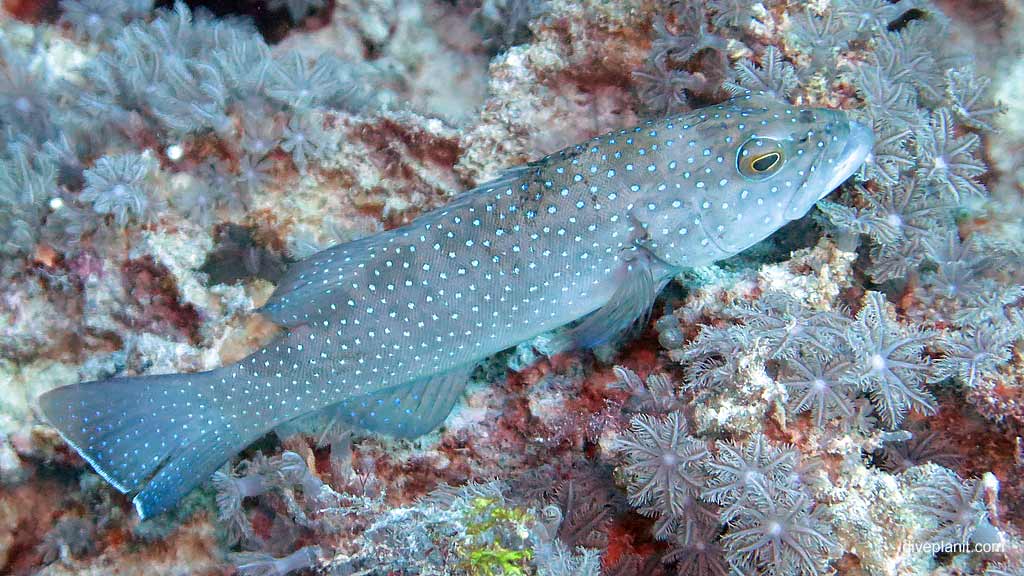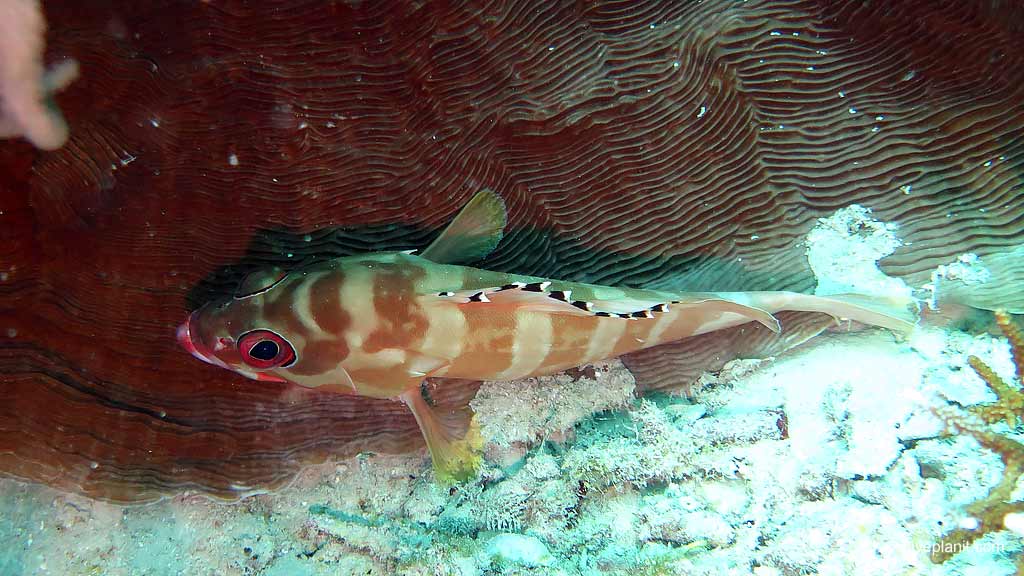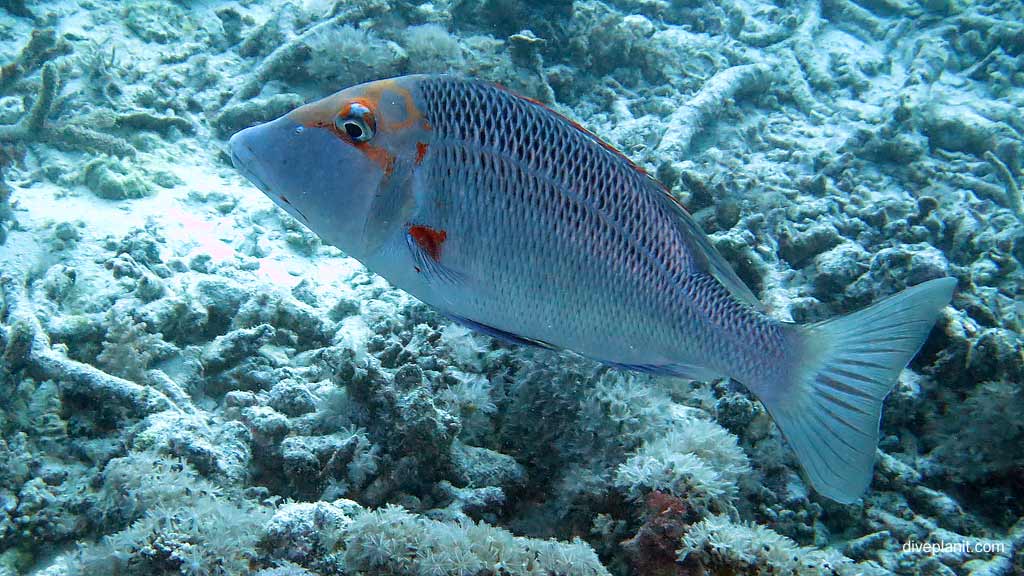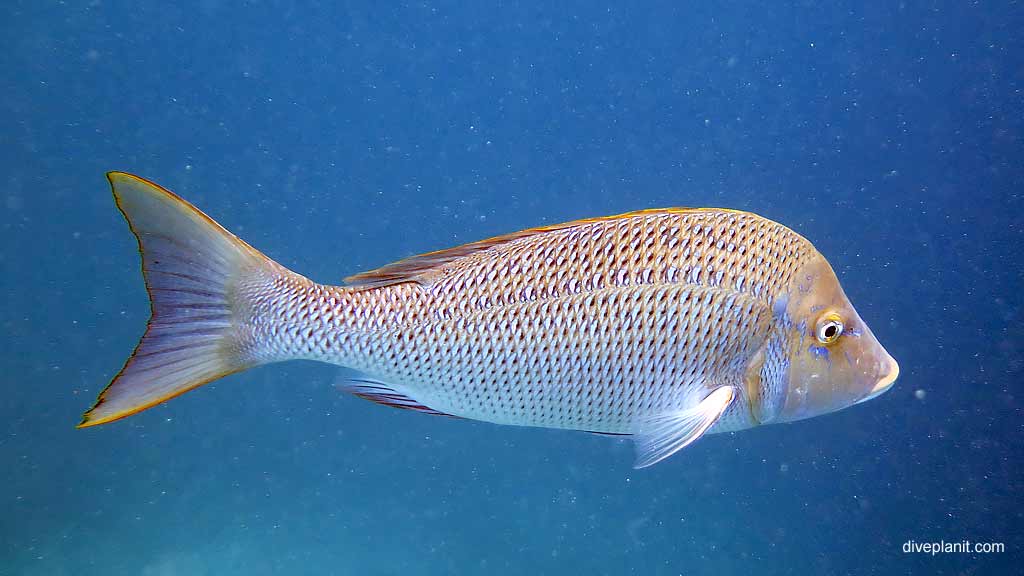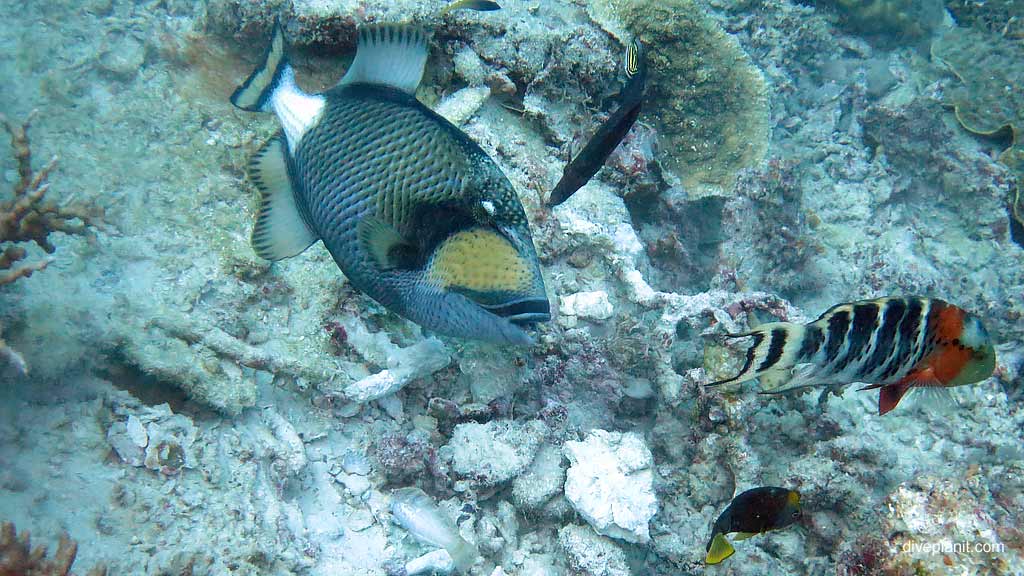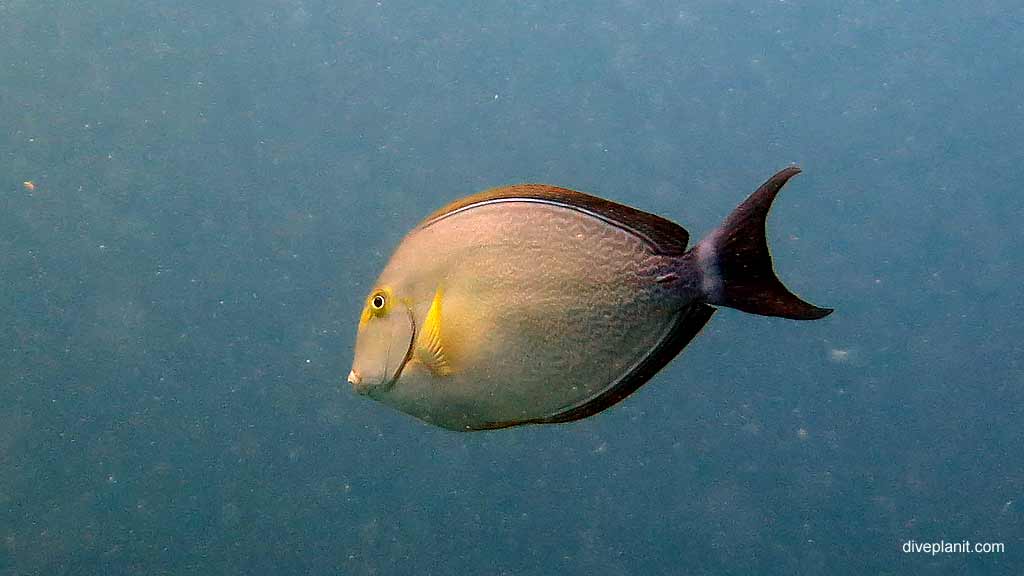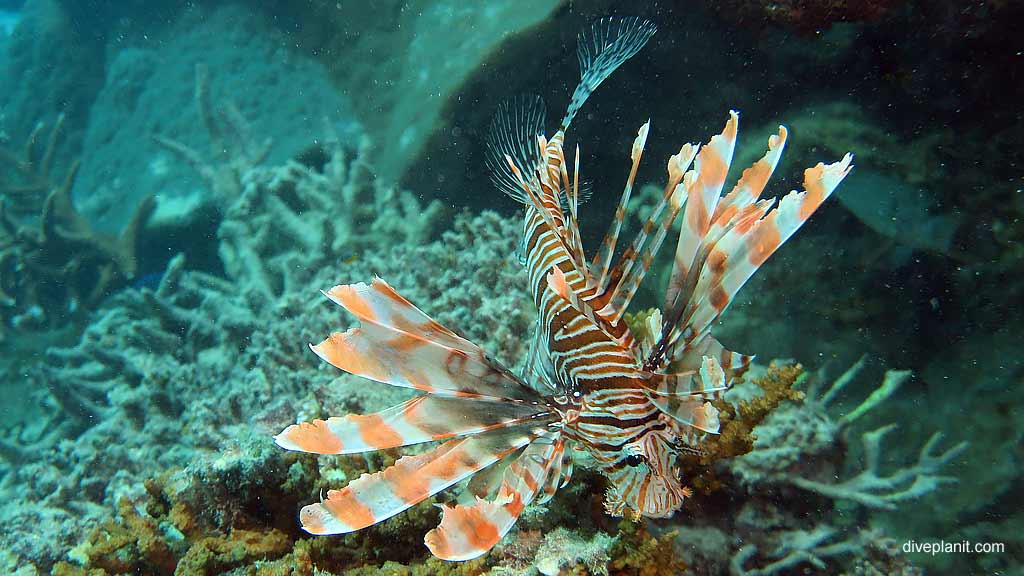| Site Type: | Fish and fauna generally |
| Depth: | Top: 5M Median: 12M Bottom: 20M |
| Location: | Hardy Reef Great Barrier Reef is about 50kms north of the Whitsundays conveniently accessible via ReefWorld owned by Cruise Whitsundays |
Five dives on Hardy Reef, part of the Great Barrier Reef, were undertaken on two consecutive days in spring during a ReefSleep overnight stay on ReefWorld owned by Cruise Whitsundays. Rather than document what we saw on any particular dive, it seems more useful to illustrate the large variety of corals, fish, nudis and other miscellaneous critters by type, so this 100m stretch of reef is covered in four parts: Hardy Reef Nudis, Hardy Reef Coral, Hardy Reef Seastars & other critters, and Hardy Reef Fish. So take your time and read them all. This one is illustrates the great variety Fish at Hardy Reef.
It’s also hard to work out which order to present them in, as each encounter is completely random. Let’s start with the pretty and obvious ones, like the defensive Damsel who is a match for any diver (or so she thinks).
There are always Anemonefish, and this one is a Pink.
A Long beaked Coralfish with leather coral.
And a Gold-barred coralfish with a shorter snout.
The very colourful and very common, Saddled butterflyfish
And the not so colourful, or common, Black butterflyfish (Chaetodon flavirostris)
Even rarer, for me anyway, the Yellow finned angelfish
Whereas the Six banded angelfish (getting a clean) are ten a penny!
This rather ordinary looking guy is a Pearly monocle bream
This tiny blenny is no more than 25mm high, and in none of the books in my possession, so I don’t know what kind.
Conversely, that most common of reef lizard fish – the Reef Lizardfish!
And here’s a rare find: the Signal Goby (Signigobius biocellatus), sometimes called the Crab-eye Goby.
Another little chap you don’t see too often, the Cryptic or Sneaky wrasse.
Looks at first sight like an ornate or dwarf hawkfish, but apparently the 10 dorsal fin spines are a dead giveaway (yeah I counted them!)
Another fish you don’t see too often, the Southern Tubelip Wrasse – look at his chops!
And one you do, though not usually from this angle – Crescent wrasse.
Also from the front, the Slingjaw wrasse. This guy can shoot out his lower jaw a few centimetres to consume anything that gets too close.
Another colourful favourite of mine, the Harlequin Tuskfish. He plays havoc with Photoshop. The red always comes out an unnaturally bright scarlet with my dive light, and even when I’ve toned him down, it still looks like I’ve over done the saturation and hue.
Moving on to the grouper, the obvious place to start is the Honeycomb grouper
Next is the Camouflaged Grouper,
And this one, which is a Grouper with orange spots – but not the ‘Orange Spotted Grouper’ which is found closer to estuaries, not reefs, and looks completely different.
Next up the Starry grouper
And this one, ‘spotted’ on a night dive, which I thought might be a Cryptic crevice dweller – but no just another starry grouper.
How do you tell the difference between the spotted and the starry? Well, the Spotted Coral Grouper has a blue ring around eye.
Finally, the Black tipped grouper, clearly showing the black tip of his dorsal fin. Normally, he looks quite glum, and depending on the light, has distinct red and white bands, or not.
The Sweetlip emperor is identifiable by the red markings,
Whereas the Spangled Emperor is identifiable by his spangles*.
Everyone loves the Titan triggerfish – especially when he’s re-arranging the reef – as everyone gets a feed. It’s true, the female will charge divers, but only when protecting her nest in the sand. She patrols an (inverted) cone above the nest – so just stay out of that area. And if she gives chase, swim horizontally away, not up and away!
There were a large number of Yellow fin surgeon, they tended to patrol the waters directly under the pontoon.
And last, and unfortunately, not least, the Lionfish.
* That was a poor attempt at a joke.

